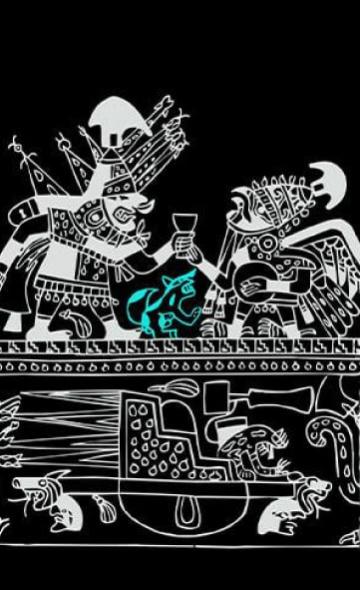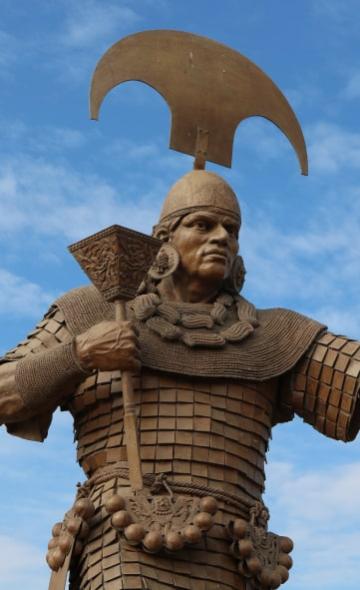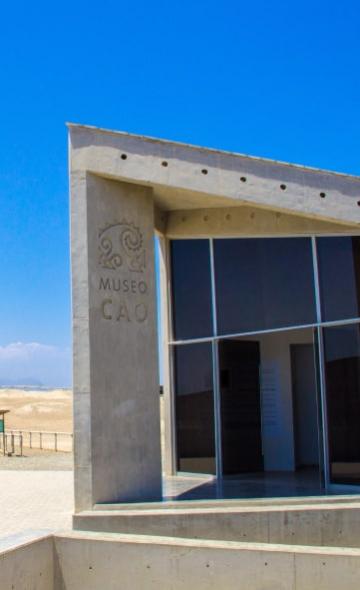- Visitors
- Researchers
- Students
- Community
- Information for the tourist
- Hours and fees
- How to get?
- Activities El Brujo
- Virtual tours
- Classic route
- Mystical route
- Specialized route
- Site museum
- Know the town
- Cultural Spaces
- Cao Museum
- Huaca Cao Viejo
- Huaca Prieta
- Huaca Cortada
- Ceremonial Well
- Walls
- Play at home
- Puzzle
- Trivia
- Memorize
- Crosswords
- Alphabet soup
- Crafts
- Pac-Man Moche
- Workshops and Inventory
- Micro-workshops
- Collections inventory
- News
- Students
- Mochica Social Organization: Exploring power relations in Peruvian antiquity
News
CategoriesSelect the category you want to see:
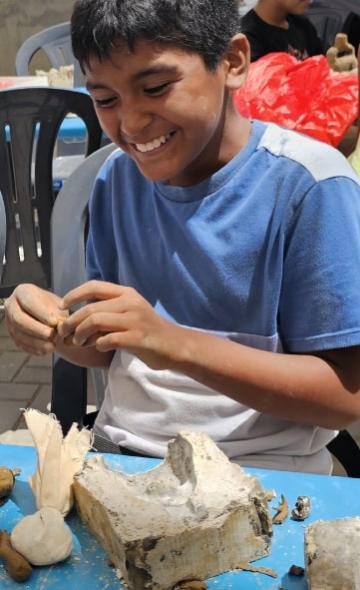
With enthusiasm, we concluded in March the summer workshops held free of charge at the facilities of the El Brujo Archae ...
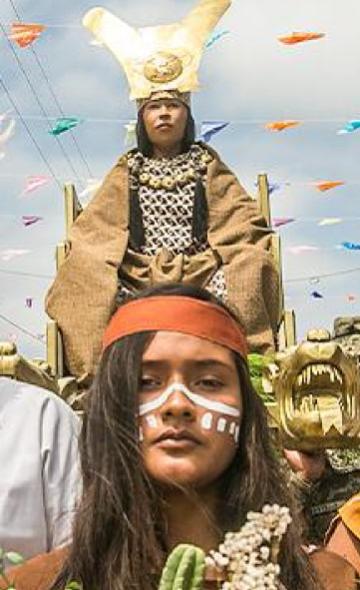
The Lady of Cao is considered to be one of the most important archaeological finds in Peruvian archaeology. Thanks to he ...
To receive new news.
The Mochica society was a cultural group that settled mainly on the northern coast of Peru, in pre-Hispanic times. This population stood out for its artistic ingenuity, its complex political-religious organization, as well as for the vast constructions they left throughout the territory in which they settled. In this post, we will tell you about the Mochica social organization.
Origins of the Mochica culture
According to some archaeological research, it is suggested that the origin of the Mochica could be traced back to the Gallinazo society, around 200 B.C. The latter was formed some 300 years earlier (Millaire et al., 2016).
However, we must not omit that there is evidence of several Mochica entities coexisting around the years 100 and 800 A.D. (Castillo and Donnan, 1994), which shared similar cultural codes.
The Mochica society was organized in a hierarchical and stratified manner, with a ruling elite at the cusp of the social structure. This upper class, which included figures such as the Lord of Sipán and the Lady of Cao, held the political, religious, and cultural power in the Mochica society.
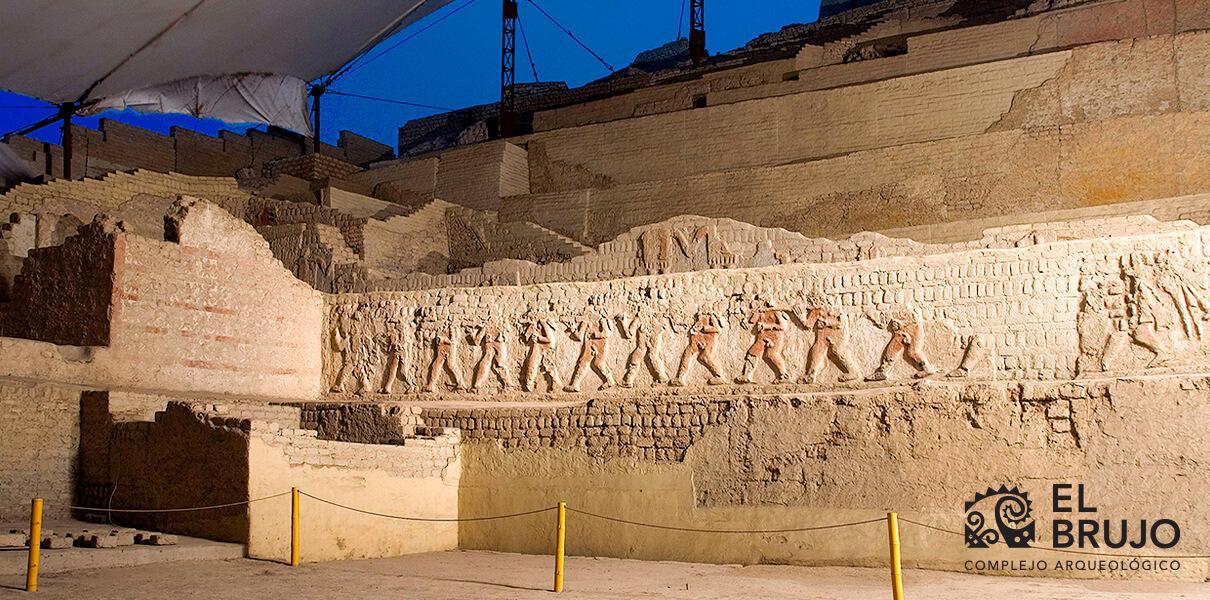
The Mochica leaders promoted the production of mural paintings, beautiful pieces made of the finest metals, the manufacture of delicate ceramics, among others. Not only do these stand out for their artistic value, but they were also elements used by them to capture their worldview and communicate their complex belief system.
Through each of these pieces, we have an approach to the way in which their social hierarchy was structured, how their battles were carried out, their human sacrifices, and we even learn about the supernatural beings in whom they believed. The Moche leaders used religion and the objects associated with it as a way to legitimize their authority and control over society.
Division of the territory and social classes of the Mochica
The research carried out in the territories occupied by this civilization has allowed us to know that the Mochica settled in two main areas: one to the north and the other to the south, so we can say that they settled in areas from Alto Piura to Huarmey. Also, the archaeological evidence allows us to speculate that in each of these areas there were different groups of people with their own elites and social classes.
If we talk about the decline of this civilization, we can see that during the first half of the seventh century important changes took place in both the north and the south. On the one hand, there was evidence of a climate crisis on the coast, and, on the other hand, there was evidence of the expansion of Wari society. As a consequence of both phenomena (climatic and social), a period of decline was unleashed that led the group settled in the south, despite the efforts of its rulers to consolidate its authority, to discredit the image of its leaders and the system, resulting in the abandonment of its temples.
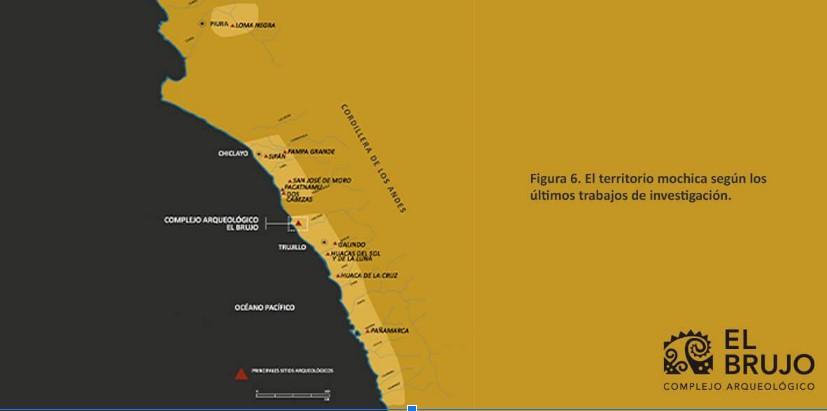
Regarding the territory located in the north, the dynamics were different. Here, the adjustments in the Mochica religious discourse allowed the survival, though agonizing, of its elite. Evidence of this is the tomb of the Lord of Sipán, whose rule would have been conducted in this period.
Would you be interested in learning more about this wonderful culture? Do not hesitate to visit us! The El Brujo Archaeological Complex is a unique place because it synthesizes the entire history of the men and women who have successively inhabited the northern coast of Peru during the last 14 millennia. In this process, the flourishing of the Mochica culture (200 - 800 A.D.) is of special importance due to the artistic dexterity and technological knowledge attained during that period.
In the El Brujo site museum we can contemplate an exhibit of the objects uncovered by the archaeological excavations. Here rests the mummified body of an iconic personage for Peru, the Lady of Cao, in a surprising state of conservation.
Also, in El Brujo you can visit various huacas and archaeological sites, such as Huaca Cao, Huaca Cortada and Huaca Prieta, as well as a space especially set up for mystical experiences. The audio guide service has been specially developed by those who are in charge of the investigations and custody of the archaeological site, allowing you to complete the experience with interesting information reserved only for those who visit the place. We look forward to greeting you!
You can also read:
• The face of the Lady of Cao: Learn all the details of its reconstruction
• Lord of Sipán: Who was he and what culture did he belong to?
Students , outstanding news


